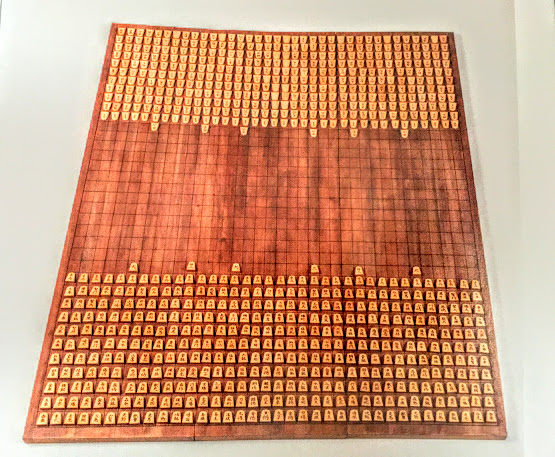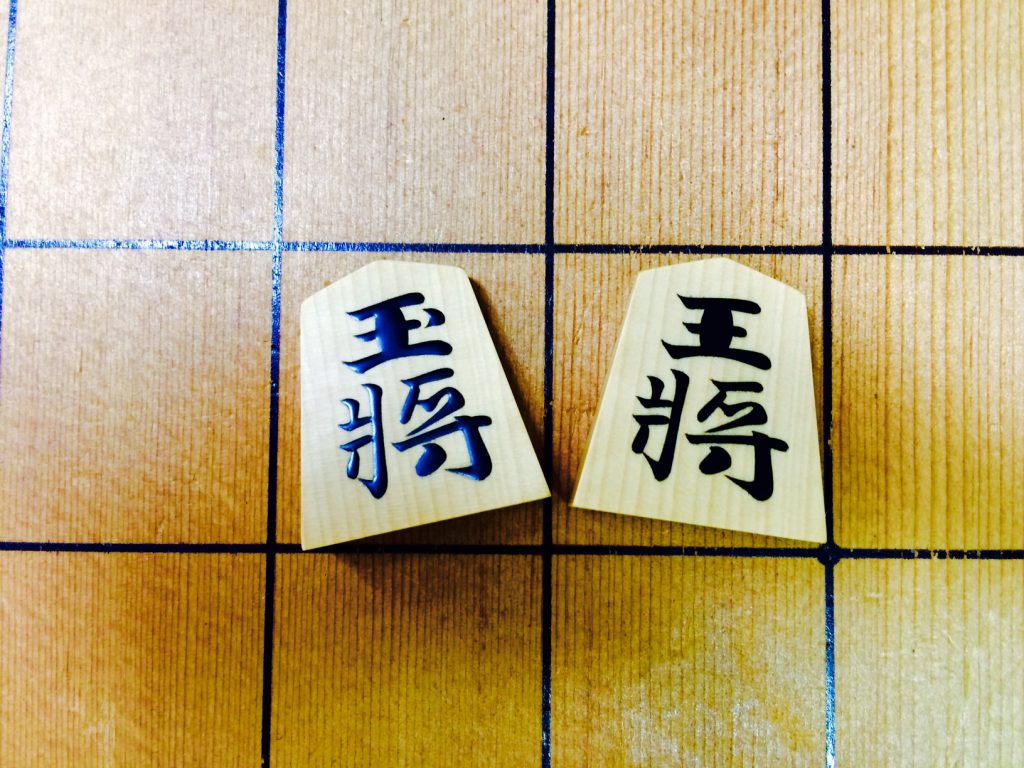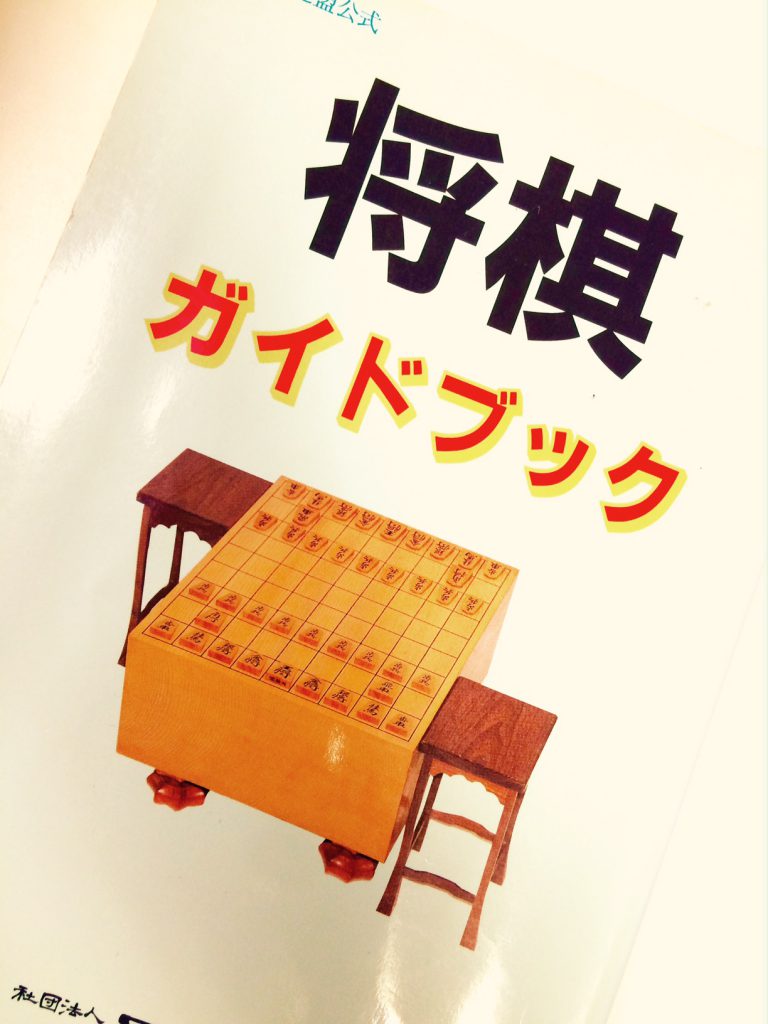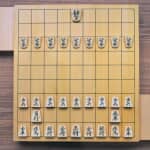19 December 2016
Five surprising and convincing pieces of trivia on Shogi history
It is said that history of Shogi can be traced further back to even before the era of Nara. From time immemorial up to the present, Shogi has evolved itself to be the form of today. So, today, I would like to introduce five surprising and convincing pieces of trivia born in the long history of Shogi.
1. A variant of Shogi once had 804 pieces.

“The Exhibition on Japanese Shogi and Culture”
As mentioned in the previous post “You can boast of your knowledge to your children if you can tell them the following five Shogi stories,” today’s Shogi is called “Hon Shogi (standard Shogi).” Hon Shogi uses a board of 9 X 9 squares with 8 types of pieces [Gyoku (king), Hi (rook), Kaku (bishop), Kin (gold), Gin (silver), Kei (knight), Kyo (lance) and Fu (pawn).]
There were once various other types of Shogi such as “Sho Shogi (small Shogi)” and “Dai Shogi (large Shogi)” besides “Hon Shogi” played in the history of Shogi.
I think that things become refined and simple as time goes by, as this is applicable to everything.
Some may find it difficult to memorize the rules and piece moves of Hon Shogi, but actually, the old variant of Shogi was more complicated and hard to understand. It had a board of 15 X 15 squares and totally 130 pieces of 29 different types of pieces.
It’s too early to get surprised.
The largest variant of Shogi among the currently known Shogi games is called “Taikyoku Shogi (ultimate Shogi).” Its board has 36 X 36 squares and there were a total of 804 pieces of 209 different type pieces, if you add your pieces and the opponent’s.
Also, looking into each piece more carefully, you find many fancy names of pieces such as Suisho (Water general), Chiryo (Earth dragon), Rinshi (Kirin master), Hibyo (Flying cat), Gyuhei (Ox soldier), Mokusha (Wood chariot), Kinno (Neighboring king), Rikishi (Wrestler) and so on. You may feel more confused about how to play this game. It seems to take quite a lot of time just to lay out pieces on the board.
Taikyoku Shogi was actually played in a popular TV program once, and I heard that it took 32 hours and 41 minutes with 3805 moves until termination.
2. “Oushou” was created by Toyotomi Hideyoshi.

When we play Shogi now, a higher ranked player uses Oushou (king), and the other uses Gyoku (gem general). However, there was no such a difference originally, and both players used Gyoku. I heard that this difference was due to a simple mistake by a piece maker, since just adding a dot on the Chinese character representing king makes the Chinese character for a gem.
Actually, there is an interesting theory that Toyotomi Hideyoshi, a famous Samurai warrior of the 16th century, ordered to make a piece of Oushou.
Shogi is considered as a game whose ancestor called Caturaṅga born in the ancient India found its way through the south-east Asia into Japan, originally. Chinese characters for the pieces came from China, though. In the ancient India, a king was a center of a battle, and thus a piece of king was used in Caturaṅga.
However, Makruk, a Shogi-like game of Thailand was also introduced to Japan. Makruk has a piece called “seashell.” A seashell was considered as money and treasure in the ancient times, and Makruk had a unique concept of fighting over treasure. Makruk influenced Shogi to have pieces representing jewels such as Gyoku (gem), Kin (gold) and Gin (silver). Gyoku means the most valuable gem.
The oldest Shogi pieces in Japan were found in the precincts of Koufukuji Temple in Nara. These pieces were made in 1058. The piece of Gyoku was one of them, but the piece of Oushou was not found.
It is said that Oushou was made in Nanboku-cho period (South and North Courts period) of the 14th century, during the formative years of the Muromachi era. There were two emperors, one in each dynasty of the North and the South. As stated in the proverb “The earth cannot support two masters,” two emperors fought for the throne. Under such a historical circumstance, the notion that the most important piece should be a king (Oushou) and a gem (Gyoku) should come to the second was born in Shogi.
Now, let’s go back to Toyotomi Hideyoshi. It is said that Hideyoshi insisted that the most important piece should be Oushou, otherwise the strongest piece meant treasure. It was also considered confusing to have two pieces of Oushou as the prime piece of each team, and thus one became Oushou and the other Gyoku. I think that Hideyoshi’s claim that there shouldn’t be two kings on the earth is reflected in Shogi.
Hideyoshi’s preference for wars to treasure may have created such a story. Also, it is said that Hideyoshi ordered a special piece of Oushou with a Chinese character meaning big. It is a historical fact that Hideyoshi was a Shogi fan, and that is why there were various episodes about Hideyoshi and Shogi, I think.
3. Hon Shogi without local news

“Sankin-kotai” is a policy established in the era of Edo, under which a “Daimyo (a feudal lord and a subordinate to Shogun)“ left his fief and lived in Edo, a capital then, in alternate years.
Daimyo had to bear a significant financial burden for traveling expenses between the fief and Edo, meals for accompanying subordinates and so forth, and thus, lost financial competence to rebel against the feudal government. On the other hand, there was an upside as well. Cultural exchange between the capital and the country sides was enhanced naturally by Daimyo’s regular travels despite a strict restriction on ordinary people’s traveling then.
As a matter of fact, I think that Shogi is also a part of Japanese culture which was significantly developed by Sankin-kotai.
“Bushi,” a Samurai worrier played a center role in the cultural exchange. Those Bushi who accompanied their lords and lived in Edo for a certain period of time did not play Shogi at the community center type places but went to Shogi schools managed by the heads of Shogi such as Ohashi family. Quite a few Bushi gained a certification as a dan (A kind of ranks given to relatively high-ranked players.) holder. Dan certification of those days was very precious and could be used as ID to show to officers at a checkpoint.
Once Bushi learned something in Edo, they felt like teaching that to people in their home towns. They taught Shogi to the local people, and thus Shogi rules were unified naturally all over Japan. While many games in the world have local rules, Shogi lost its local rules at quite early stage due to Sankin-kotai. I am very sure that the standardized rules of Shogi is the foundation of Shogi’s popularity.
However, there are some local variations for Yamakuzushi (Mountain pill-down: A game played with Shogi pieces) and Mawarishogi (Round Shogi: A Pachisi-like game). I don’t think that these games were taught in Shogi schools in Edo.
4. Tokugawa Family was “Mirusho (A type of Shogi fans who enjoy just watching others’ games but do not play Shogi themselves.)”.

“Mirusho” is a type of Shogi fans who enjoy just watching others’ games but do not play Shogi themselves. They pay attention to outcomes of professional players’ games, frequently attend Shogi events, and try to interchange with Shogi players in social events. However, some of them do not even know Shogi rules.
Online videos are one of promoters for the recent increase of Mirusho. Shogi players with unique personality on the videos caught the eyes of people, as they started to appear in public more than ever before. It was unprecedented to introduce professional Shogi players’ meals and snacks on the Internet. I do not think that we can expect same things from professional baseball and soccer players. So, I think it is understandable that there are more female Mirusho than males.
So, why did “Shogun (a hereditary military dictator)” of Tokugawa clan who were neither females nor residents in the age of the Internet become Mirusho?
“Oshiro Shogi” is one of the Tokugawa shogunate’s annual events which was started in early Edo era.
Oshiro Shogi meant a Shogi match held in front of Shogun, Roujuu (a senior councillor of Tokugawa shogunate) and other high-ranked Samurai warriors at “Okuro Shoin (a room where relatively high ranked Bushi stayed).” in the donjon of Edo Castle.
Representatives of three famous Shogi families, Ohashi Honke clan, Ohashi Bunke clan and Itou clan competed with one another.
November 17th was decided as a battle day when Tokugawa Yoshimune was Shogun during Kyohou era (1716 – 1735). Now, November 17 is called “Day of Shogi” to commemorate Oshiro Shogi, and there are Shogi match events held somewhere in Japan on this day annually.
I told you that some “Mirusho” people do not even know the rules of Shogi. However, as for Tokugawa clan, there were some who enjoyed actually playing Shogi themselves.
It is quite famous that Tokugawa Ieyasu, the first Shogun, enjoyed playing Shogi. Tokugawa Ieharu, the tenth Shogun, also truly liked Shogi and was assumed to be as good as a high-raked amateur player. There was a “Kifu (Shogi game score)” left to indicate that Ieharu beat then “Meijin (master)” without any handicap. I think that the representative players of the famous Shogi families must have felt tense being observed by such a strong Shogi player Shogun.
(title)
5. Shogi pieces are wedge-pentagon shape because they were made out of recycled “Mokkan (a narrow strip of wood on which an official message is written)”.

Do you know that our company’s name “I-tsu-tsu” is derived from the shape of a Shogi piece, a pentagon? “I-tsu-tsu” means five in Japanese.
As I repeatedly talk about this in the blog, the root of Shogi is an ancient Indian game called “Caturaṅga.” This game is a common ancestor for Xiangqi of China, Changgi of the Korean Peninsula, and chess of Europe, and thus they are brothers. However, there is no pentagon shape piece like a Japanese Shogi piece. Xiangqi’s pieces are round-shaped, Changgi’s are octagon-shaped, chess and Makruk use three-dimensional pieces.
Although this is not an established theory, there is a tradition about the shape of Shogi piece.
This is a story of Heian era (794 – 1185).
People then used pentagon-shaped wooden pieces called Mokkan and “Daisen (a title slip attached to the cover of traditional Japanese book)” to record and file documents in Japan. These wooden pieces were shaved for recycling, but as they were repeatedly shaved, they became unsuitable for document record. Then, it is considered that people recycled the small wooden pieces as Shogi pieces.
Lately, the world pays attention to the Japanese term of “Mottainai (wasteful).” I think that Shogi pieces made out of recycled Mokkan is due to the spirit of “Mottainai.”
By the way, I heard that some Shogi boards of Muromachi era (1336 – 1573) were recycled to be chopping boards. Shogi boards are 3 centimeter thick and rectangular shape. So, I believe people felt like using them as a chopping board. I heard that there were many traces of knife cuts on the boards.
I think it sounds very Japanese to recycle something and make a good use of it until the very end.
Reference: “Shōgi as Japanese Culture” Edited by OMOTO Keiichi
Sangensha, 2002.12.20.
Since Shogi has a long history, there are many interesting episodes and tradition.
We have quite a few traditional culture enjoyed by many for a long time just like Shogi in Japan.
Koichi Saijo, Advisor of Shogi history and culture, Japan Shogi Association, advised us to write today’s post. We would like to express our deep appreciation to him for his kind corporation.
We hope to continue to introduce attractive traditional Japanese culture to children and people in the world. If you are interested in learning Shogi, check out our articles on Shogi rules!



